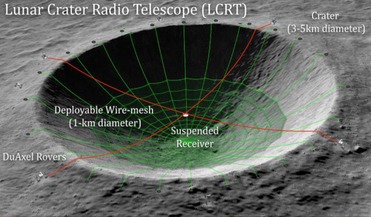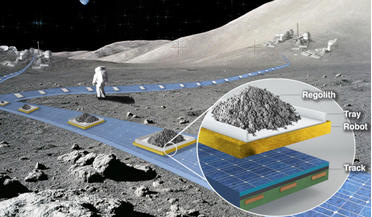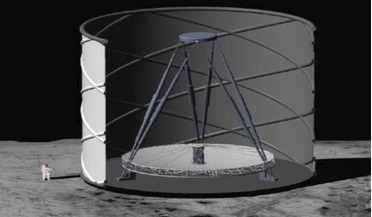 08 April 2020
NASA funds vast radio telescope concept on far side of the Moon
08 April 2020
NASA funds vast radio telescope concept on far side of the Moon
... in diameter, on the far-side of the Moon into a spherical reflecting dish and use it as a radio telescope. Called the Lunar Crater Radio Telescope (LCRT), the dish would be able to observe the Universe in the 5 –100 metre wavelength band, a region...
 26 February 2021
Lunar levitation track system among new ideas funded by NASA
26 February 2021
Lunar levitation track system among new ideas funded by NASA
... an innovative mission to view the surface of exoplanets using small sats and the Lunar Crater Radio Telescope (LCRT) – a vast radio telescope concept deployed to a crater on the far side of the Moon that was proposed by Saptarshi Bandyopadhyay...
 18 November 2020
Astronomers want to revive idea for ‘Ultimately Large Telescope’ on the Moon
18 November 2020
Astronomers want to revive idea for ‘Ultimately Large Telescope’ on the Moon
... Earlier this year NASA awarded a grant for the development of the Lunar Crater Radio Telescope (LCRT) – a wire-mesh receiver one kilometre in diameter that would sit inside a large lunar crater. Long before this idea, the US space agency had already...